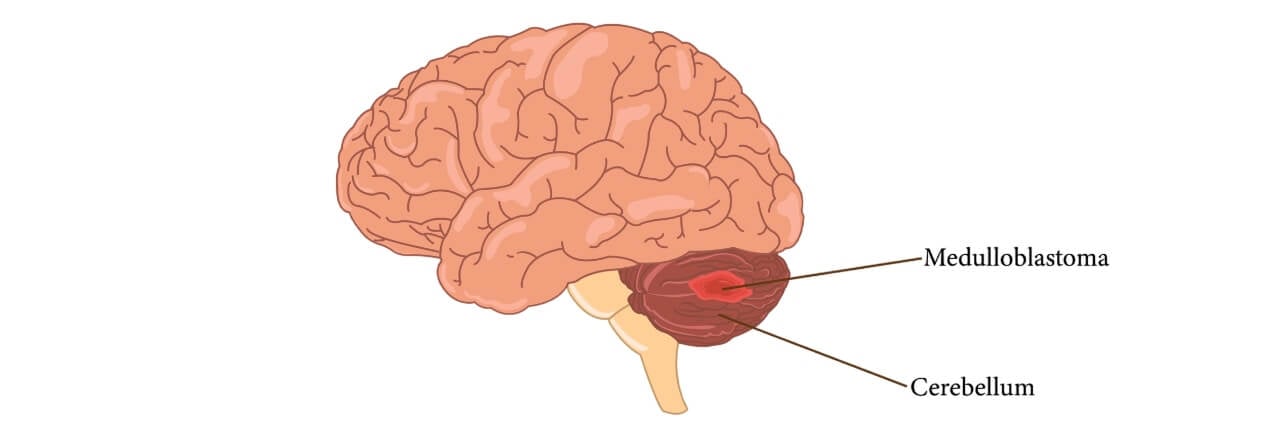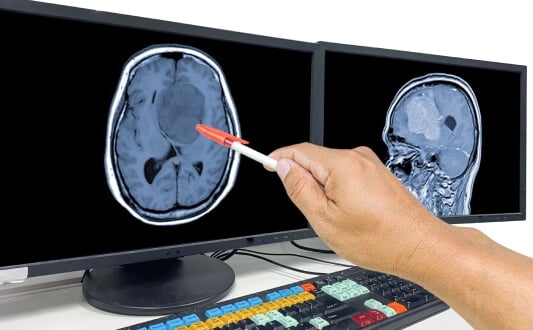Medulloblastoma, while most commonly associated with children, can also occur in adults, although it is much rarer. In adults, medulloblastoma accounts for less than 1% of all primary brain tumors. It typically originates in the cerebellum, which is the part of the brain responsible for balance, coordination, and motor control. Like in pediatric cases, adult medulloblastomas are characterized by rapid growth and can spread through the cerebrospinal fluid to other areas of the central nervous system, including the spinal cord.
Medulloblastoma in adults most often presents between the ages of 20 and 40, with a slightly higher incidence in males. Due to its rarity, diagnosis can sometimes be delayed. However, early detection remains crucial. Prompt diagnosis and treatment can significantly improve outcomes and long-term survival rates.
Facing a diagnosis of medulloblastoma brain cancer as an adult can be overwhelming, but it is important to know that advances in research and treatment are offering new hope. With dedicated medical teams, innovative therapies, and personalized care, many adults are achieving positive outcomes and reclaiming their quality of life after treatment. There is real hope, and every patient deserves the chance to move beyond cancer toward a healthy, fulfilling future.
Medulloblastoma Signs, Symptoms and Diagnosis
Medulloblastoma, as a rare malignant brain tumor in adults, can obstruct cerebrospinal fluid flow, leading to increased intracranial pressure and a range of symptoms such as:
- Headaches, often more severe in the morning.
- Nausea and vomiting, particularly upon waking.
- Balance and coordination difficulties, such as clumsiness or an unsteady gait.
- Dizziness and double vision.
- Fatigue, lethargy, and behavioral changes, including irritability or personality shifts.
- In some cases, seizures or back pain may occur, especially if the tumor spreads to the spinal cord.
Diagnostic Procedures
- A neurological examination assesses motor skills, reflexes, vision, and coordination.
- Magnetic resonance imaging (MRI) of the brain and spinal cord is the primary imaging tool used to detect and evaluate tumor size and location.
- A biopsy is performed to obtain a tissue sample for histological analysis, confirming the diagnosis and identifying the tumor subtype.
- A lumbar puncture (spinal tap) may be conducted to check for cancer cells in the cerebrospinal fluid, indicating potential spread.
All medulloblastomas are classified as grade 4 tumors, signifying they are malignant and fast-growing. Further classification into molecular subgroups is as follows: WNT-activated, SHH-activated, Group 3, and Group 4. This aids in determining prognosis and tailoring treatment strategies.
Standard Treatment Options for Medulloblastoma
The standard treatment for medulloblastoma involves a multimodal approach, which aims to maximize tumor control while minimizing long-term neurological side effects.
The initial step in treating medulloblastoma is the safest possible surgical resection. The goal is to remove as much of the tumor as possible without causing neurological damage. Complete or near-total resection is associated with improved survival rates. However, due to the location of the tumor in the cerebellum and its proximity to critical brain structures, complete removal may not always be feasible. Postoperative complications may include posterior fossa syndrome, which is characterized by speech and motor difficulties.
Following surgery, craniospinal irradiation (CSI) is administered to eliminate residual tumor cells and prevent metastasis through the cerebrospinal fluid. Standard-risk patients typically receive a lower dose of CSI, while high-risk patients require higher doses. In adults, craniospinal irradiation remains a standard component of therapy, although efforts are made to minimize neurocognitive side effects when possible. Proton beam therapy is an alternative that can reduce damage to surrounding healthy tissue.
Chemotherapy is used in combination with surgery and radiation therapy to target remaining cancer cells. Regimens are selected based on molecular subgroups and individual patient factors to maximize treatment efficacy.
Multimodal Therapy for Medulloblastoma Based on Risk Stratification
Treatment plans are customized based on risk stratification, which considers factors such as age, extent of tumor resection, presence of metastases, and molecular subgroup classification. Standard-risk patients often have favorable outcomes with combined modality therapy, while high-risk patients may require more intensive treatment protocols.
Follow-Up Care for Medulloblastoma
After completing initial treatment, patients undergo regular follow-up to monitor for recurrence and manage long-term side effects. This includes periodic MRI scans, neurological assessments, and evaluations for cognitive and endocrine function. Early detection of recurrence and management of late effects are critical components of survivorship care.
Innovative Therapies for Medulloblastoma and New Approaches
Advances in the treatment of medulloblastoma tumors have led to the exploration of innovative therapies aimed at improving survival rates and reducing long-term side effects. The innovative therapies and interventional radiology techniques described below are generally recommended for patients aged 18 years and older.
Immunotherapy and Dendritic Cell Research for Medulloblastoma
Immunotherapy has emerged as a promising approach in treating brain cancer medulloblastoma in adults. Among various strategies, dendritic cell vaccines are being investigated for their potential to stimulate the immune system to recognize and attack tumor cells.
Dendritic cells are antigen-presenting cells that can be loaded with tumor antigens to elicit a targeted immune response. Clinical trials are ongoing to assess the efficacy and safety of dendritic cell-based vaccines in patients with medulloblastoma and other malignant brain tumors.
The foundational work in this field was conducted by Canadian immunologist Ralph Steinman, who discovered dendritic cells in 1973 and demonstrated their role in activating adaptive immunity. In recognition of his research, Steinman was awarded the Nobel Prize in Physiology or Medicine in 2011. His discovery has been instrumental in developing dendritic cell-based vaccines, which are now being administered for various cancers, including medulloblastoma.
Interventional Radiology in Medulloblastoma
Interventional radiology (IR) offers minimally invasive, image-guided procedures that play a crucial role in the diagnosis and management of the brain tumor medulloblastoma, particularly in cases involving spinal metastases or recurrent disease.
- Image-Guided Biopsies and Drainage Procedures: IR techniques enable precise, image-guided biopsies of central nervous system lesions, facilitating accurate diagnosis with minimal patient discomfort. In addition, IR can be employed to drain cystic components of tumors or alleviate cerebrospinal fluid obstructions, thereby reducing intracranial pressure and associated symptoms.
- Thermal Ablation Techniques: Thermal ablation methods, such as radiofrequency ablation (RFA) and microwave ablation (MWA), utilize heat to destroy tumor cells. MWA, in particular, offers advantages such as higher intratumoral temperatures and larger ablation zones, making it effective for treating solid tumors, including spinal metastases. These procedures are typically guided by imaging modalities such as CT or MRI to ensure accuracy and safety.
- Cryoablation: Cryoablation involves the application of extreme cold to induce tumor cell death. This technique is beneficial for treating spinal metastases, offering rapid and sustained pain relief. Studies have reported significant reductions in pain scores post-procedure, with some patients achieving complete pain relief. Cryoablation also provides high rates of local tumor control, making it a valuable option for palliative care.
- Electrochemotherapy (ECT): ECT combines chemotherapy with electrical pulses to enhance drug uptake by tumor cells. While primarily used for superficial tumors, ongoing research explores its applicability in deeper-seated lesions, including those in the spine. ECT offers a targeted approach with minimal systemic toxicity, presenting a potential option for patients with recurrent or inoperable tumors.

Incorporating these IR techniques into the multidisciplinary management of medulloblastoma can improve patient outcomes, particularly in complex or recurrent cases. Their minimally invasive nature allows for reduced recovery times and the possibility of repeated treatments, aligning with personalized care strategies.
Electrochemotherapy Explained: Why This "New Kid on the Block" is Changing Cancer Treatment
| Therapy Type | 2-Year Survival Rate | Response Rate | Duration | Side Effects |
|---|---|---|---|---|
| Standard Treatments | ~25% for advanced cancer | Less than 10% | Several cycles | Severe (nausea, fatigue, hair loss, immunosuppression, skin irritation) |
| Innovative Methods | ~60% for advanced cancer | 45-65% | Up to 4 sessions | Mild (localized discomfort) |
*Booking Health data
Medical Procedure Costs Around the World for Medulloblastoma
| Treatment Methods | Germany | Great Britain | USA |
|---|---|---|---|
| Standard Treatments | €80,000 - €150,000 full course | €90,000 - €165,000 full course | €100,000 - €180,000 full course |
| Innovative Methods | €25,000 - €60,000 full course | €70,000 - €120,000 full course | €100,000 - €150,000 full course |
*Prices may vary depending on the course of treatment and tumor characteristics.
David's Journey: Overcoming Medulloblastoma with Booking Health
At 32, David from Poland began experiencing persistent headaches and balance difficulties. An MRI revealed a rare adult medulloblastoma, turning his life upside down. Seeking the best care, David reached out to Booking Health, which quickly connected him with a top neuro-oncology center in Germany.
With Booking Health's full support, from arranging appointments to managing travel and translation, David could focus entirely on his treatment. He underwent successful tumor resection surgery, followed by craniospinal irradiation with proton beam therapy and a tailored chemotherapy plan. Rehabilitation helped him regain strength and coordination.
Today, David is back to his normal life, working and spending time with his loved ones. Follow-up scans show no signs of recurrence. With Booking Health's guidance, he found professional care and a path back to health and hope.
Fighting Cancer Together: Treatment Journeys with Booking Health
Treatment for Advanced and Recurrent Medulloblastoma
Treating advanced or recurrent medulloblastoma presents significant challenges, as standard therapies often become less effective upon relapse. Approximately 30% of patients experience recurrence, and outcomes in these cases are generally poor, with limited standardized treatment protocols available.
Management strategies for relapsed medulloblastoma typically involve a combination of approaches, including surgery, repeated irradiation, chemotherapy, and immunotherapy. However, personalized treatment plans are crucial in managing recurrent medulloblastoma.
Booking Health facilitates access to specialized care for patients with complex cases of medulloblastoma. By coordinating consultations with leading neuro-oncology centers and arranging comprehensive treatment plans, the Booking Health medical team provides essential support to patients dealing with the challenges of advanced disease.
Despite the difficulties associated with the treatment of recurrent medulloblastoma, advances in treatment strategies and personalized medicine offer hope. With a multidisciplinary approach and access to innovative therapies, there remains a path forward for patients facing this diagnosis.
Booking Health Support Services for Medulloblastoma Patients
Searching for treatment options for medulloblastoma, especially in complex or advanced cases, can be overwhelming. Challenges, such as limited access to specialized care, insurance constraints, long waiting periods, and high treatment costs, often impede timely intervention. During these critical times, Booking Health offers a solution.
As a trusted medical tourism operator, Booking Health has assisted over 100,000 patients over the past decade, ensuring they receive personalized treatment plans tailored to their specific needs. By leveraging our extensive network of top-tier medical centers, we provide access to innovative therapies and renowned specialists in medulloblastoma care.
Organizing treatment abroad may seem daunting, especially when dealing with rare conditions like medulloblastoma. However, with Booking Health, patients can save up to 40-70% on treatment costs and secure urgent (within 48 hours) access to the best medulloblastoma centers in Germany. Our comprehensive services encompass visa assistance, travel arrangements, accommodation, and continuous support throughout the treatment journey.
Choosing Booking Health means entrusting your care to professionals who are committed to facilitating access to the most advanced medulloblastoma treatments available. Let us be your partner in this journey towards recovery.
Take the first step towards effective treatment. Contact Booking Health today to explore personalized care options tailored to your needs.
Frequently Asked Questions of Our Patients with Medulloblastoma
Send request for treatmentMedulloblastoma is a fast-growing, malignant brain tumor that originates in the cerebellum, the part of the brain responsible for coordination and balance.
While medulloblastoma is a serious cancer, early detection and a combination of treatments such as surgery, radiation, electrochemotherapy (ECT), and immunotherapy can significantly improve the chances of long-term survival and remission.
Early symptoms often include headaches, nausea, vomiting, balance issues, and difficulty walking, due to increased pressure in the brain.
Diagnosis typically involves neurological examinations, imaging tests such as MRI of the brain and spine, and sometimes a biopsy to confirm the tumor type and molecular characteristics.
Standard treatments include surgical removal of the tumor, craniospinal radiation therapy, and chemotherapy.
Innovative therapies include proton beam therapy, targeted molecular treatments, electrochemotherapy, and immunotherapies such as dendritic cell vaccines.
Side effects may include fatigue, nausea, cognitive changes, and hormonal imbalances, depending on the area irradiated, the dose, and individual patient factors.
Yes, medulloblastoma can metastasize through cerebrospinal fluid to the spinal cord and other parts of the central nervous system.
Proton therapy delivers precise radiation doses to the tumor, minimizing damage to surrounding healthy tissue.
The 5-year survival rate for adults with medulloblastoma is approximately 50-60%, varying based on factors such as age, tumor subtype, and response to treatment.
Recurrence occurs in about 30% of cases, often within the first few years post-treatment, necessitating regular follow-up scans.
Long-term effects may include cognitive challenges, hearing loss, hormonal deficiencies, and increased risk of secondary cancers, highlighting the need for ongoing monitoring.
Symptoms of medulloblastoma often include morning headaches, nausea and vomiting, balance and coordination problems, double vision, dizziness, fatigue, and sometimes seizures or back pain if the tumor spreads to the spinal cord.
In Germany, medulloblastoma treatment costs range from €80,000-€150,000 for standard therapy and €25,000-€60,000 for innovative methods. In Great Britain, costs reach €90,000-€165,000 and €70,000-€120,000, respectively, while in the United States, prices average €100,000-€180,000 and €100,000-€150,000. In contrast, Australia often has limited access to advanced therapies. However, even when such treatments are available, they can be three to four times more expensive than in Europe.
For adult medulloblastoma, the 2-year survival rate with standard treatments is about 25%. In contrast, innovative methods (e.g., proton therapy, dendritic cell immunotherapy, interventional radiology, etc.) can increase survival to around 60% (even in advanced cases).
Response rates for medulloblastoma vary by therapy type: less than 10% for standard treatment and 45-65 % for innovative methods (e.g., dendritic cell therapy and electrochemotherapy), which can enhance tumor control and prolong remission.
Standard medulloblastoma therapies may cause fatigue, nausea, hair loss, and immune suppression. On the other hand, innovative treatments generally result in mild, localized discomfort, significantly reducing long-term neurological side effects.
Standard medulloblastoma treatment involves several therapy cycles over months. In turn, innovative approaches (e.g., dendritic cell vaccination, radiofrequency ablation, or cryoablation) typically require up to four sessions. Therefore, such methods can offer shorter treatment times and faster recovery.
Choose treatment abroad and you will for sure get the best results!
Authors:
The article was edited by medical experts, board certified doctors Dr. Nadezhda Ivanisova and Dr. Bohdan Mykhalniuk. For the treatment of the conditions referred to in the article, you must consult a doctor; the information in the article is not intended for self-medication!
Our editorial policy, which details our commitment to accuracy and transparency, is available here. Click this link to review our policies.
Sources:
National Institutes of Health (NIH)
Read:
Innovative Treatment for Glioblastoma in Germany: Dendritic Cell Therapy for Cancer
Article menu:
- Medulloblastoma Signs, Symptoms and Diagnosis
- Standard Treatment Options for Medulloblastoma
- Innovative Therapies for Medulloblastoma and New Approaches
- David's Journey: Overcoming Medulloblastoma with Booking Health
- Treatment for Advanced and Recurrent Medulloblastoma
- Booking Health Support Services for Medulloblastoma Patients
- Frequently Asked Questions of Our Patients with Medulloblastoma
Don't know where to start?
Contact Booking Health












